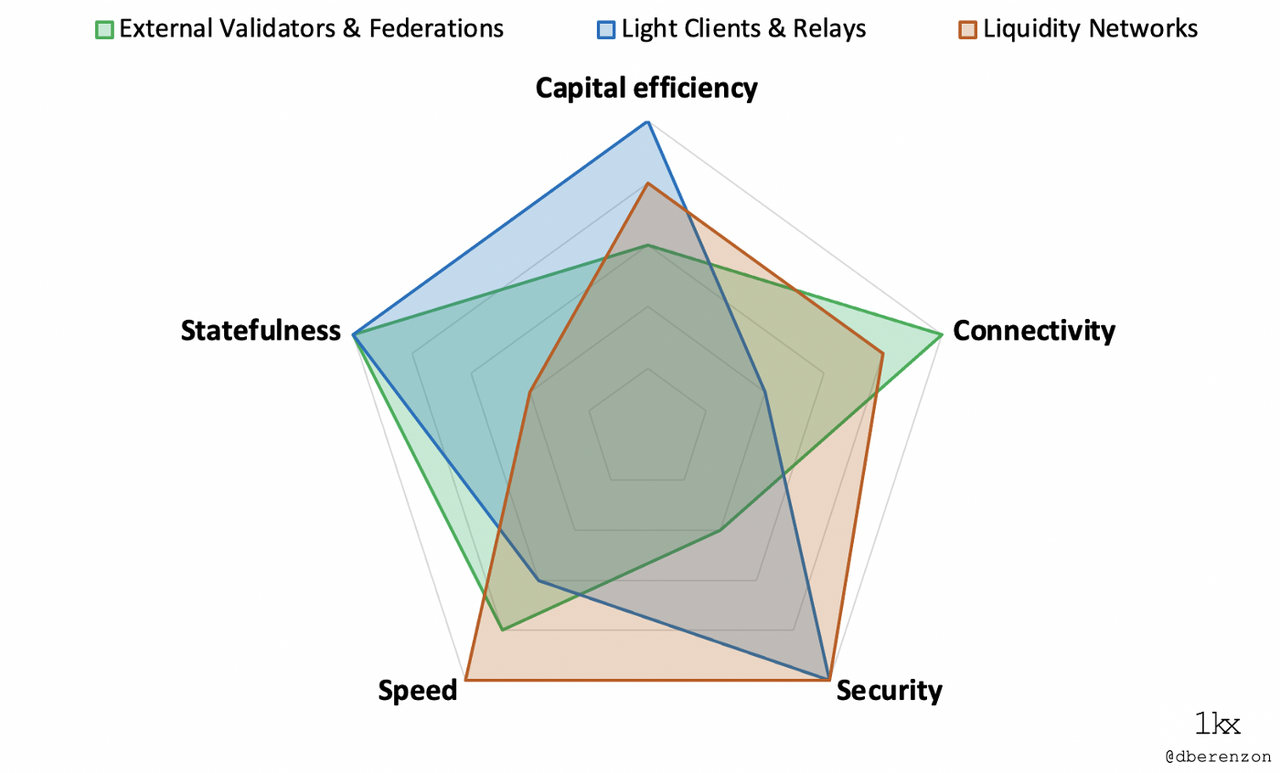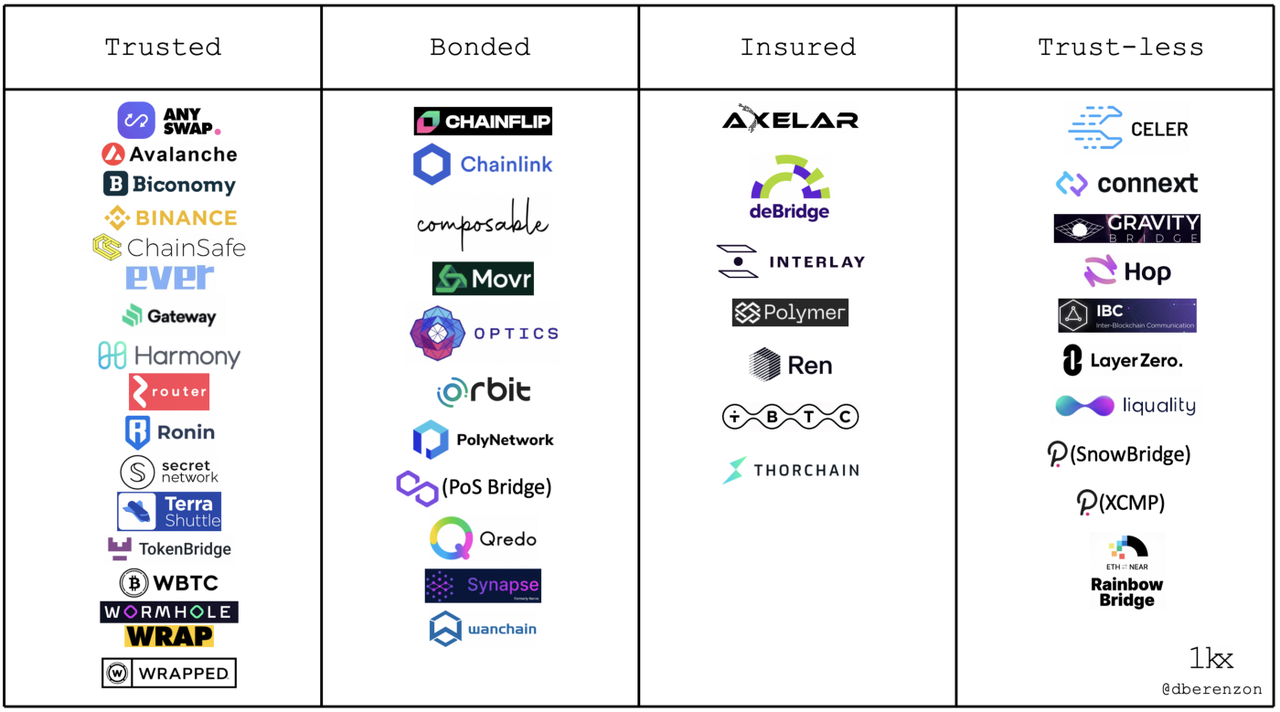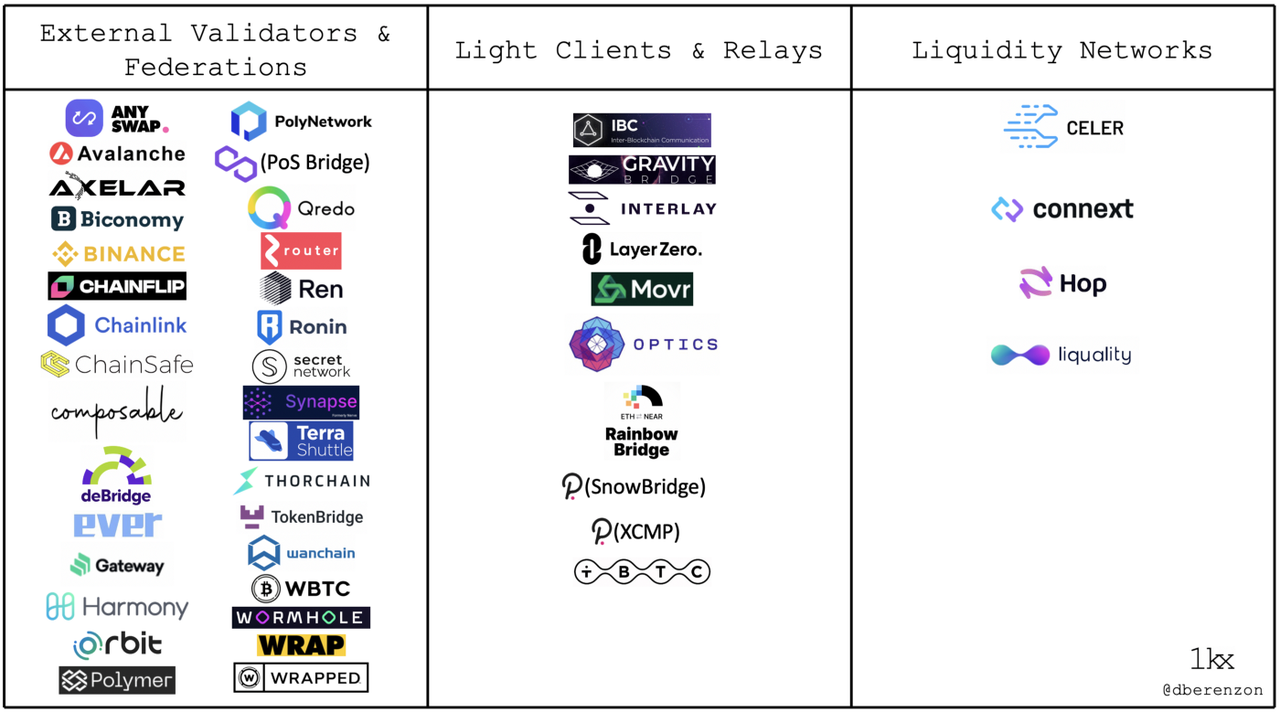跨链桥概述
跨链桥概述
好文必读:https://medium.com/1kxnetwork/blockchain-bridges-5db6afac44f8
功能范围
- Asset-specific 特定资产
- Chain-specific 特定的两条链之间
- Application-specific 特定应用
- Generalized 通用跨链协议

评价维度
- Security 安全性: Trust & liveness assumptions, tolerance for malicious actors, the safety of user funds, and reflexivity.
- Speed 速度: Latency to complete a transaction, as well as finality guarantees. There is often a tradeoff between speed and security. 速度与安全性通常不可兼得
- Connectivity 连通性: Selections of destination chains for both users and developers, as well as different levels of difficulty for integrating an additional destination chain. 是否容易添加目标链
- Capital efficiency 经济性: Economics around capital required to secure the system and transaction costs to transfer assets. 保障系统安全的资本和交易费用
- Statefulness 状态性: Ability to transfer specific assets, more complex state, and /or execute cross-chain contract calls. 传输特定资产,复杂状态,跨链执行合约
设计取舍

安全性保证
Security 又可细分为以下维度:
- Trust-less 无信任:享有与其所连接的区块链的安全性
- Insured 保险:桥梁运营者需要质押,Insured 比 Bonded 更好,如果桥梁运营者作恶,会直接扣除其质押品并补偿给用户
- Bonded 债券:桥梁运营者需要质押
- Trusted 需要信任:只依赖于桥梁运营者的信誉,没有抵押品

验证机制
- External validators & Federations 外部公证人
- 在多个公证人之间达成共识
- statefulness and connectivity 方面很好
- 但是 security 较差,用户依赖于公证人的安全性,而公证人大多数是 trusted 的模型,即使是使用质押模型也存在一些问题
- Light clients & Relays 轻客户端
- 源链产生对交易的证明,发给目标链的合约A,合约A验证交易并执行
- 优点:
- trustless 安全性强
- Statefulness 状态性强:可以传输任何类型的数据
- capital-efficient:不需要质押资金
- 缺点:
- 消耗资源多 源链和目标链都要部署智能合约,且验证交易需要gas费
- connectivity 连通性差 :对于每对区块链,都需要分别部署两个智能合约
- Speed 速度慢
- Liquidity networks 流动性网络
- 中间节点同时持有源链和目标链的资产
- 优点:
- Security 安全性强
- Speed 速度快
- capital efficient than bonded/insured external validators 比质押的外部公证人模型要更经济,因为资金只是为了保障流动性而不是安全性
- 缺点:
- statefulness 状态性差:不能传输任意消息
